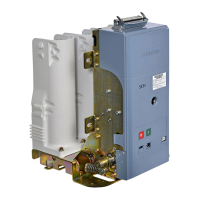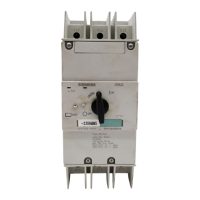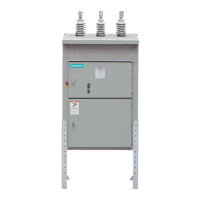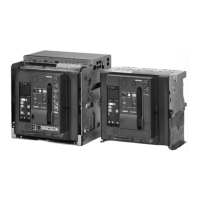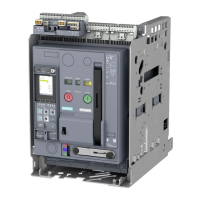Description
26 9229 0025 176 0A
2019-08-05
Undervoltage release (-Y7) 3AX1103-..
For circuits (mechanical or electrical), the undervoltage release 3AX1103-.. must be
connected to control voltage, as otherwise closing is not possible (refer to “Remov-
ing the transport block from the undervoltage release”, page 48).
The undervoltage release (-Y7) has an electromagnet system that is always live
when the vacuum circuit-breaker is in the closed state. If the voltage drops below a
certain value, the undervoltage release (-Y7) is unlatched, thus initiating opening of
the vacuum circuit-breaker via the energy storage mechanism.
Random tripping of the undervoltage release (-Y7) is generally performed by an NC
contact in the tripping circuit, but can also be done with the aid of an NO contact by
short-circuiting the solenoid coil. If this release method is used, the solenoid coil's
short-circuit current is limited by the built-in resistor.
The undervoltage release (-Y7) can also be connected to voltage transformers.
The undervoltage release (-Y7) automatically trips the vacuum circuit-breaker if the
rated supply voltage drops to an inadmissible value. Any necessary varistors and
rectifiers are integrated in the release.
Power consumption 20 W / VA
Note
Damage due to missing or incorrect series resistor
Operation without series resistor (-R1) can cause damage.
The undervoltage release (-Y7) may only be operated with the supplied series re-
sistor (-R1).
Fig. 36 Undervoltage release (51.7), depending on
the voltage with one resistor or two resistors
Fig. 37 Sample switching operation for connection of
the undervoltage release (-Y7)
(-R1) Resistor
(-S1) Auxiliary switch
(-Y7) Undervoltage
release
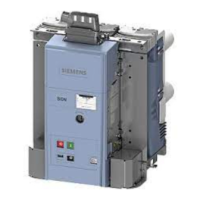
